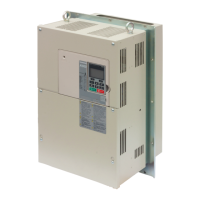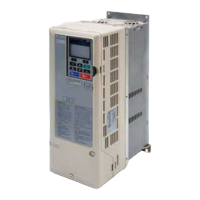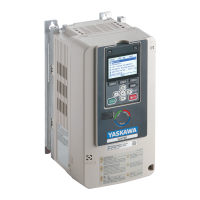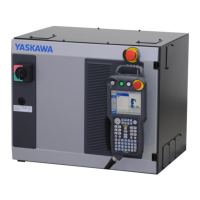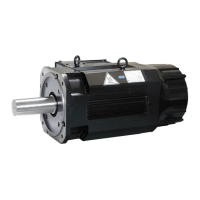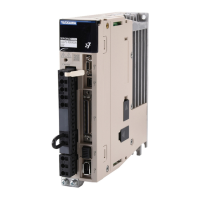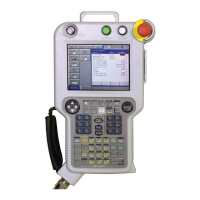u
Fine-Tuning Open Loop Vector Control
Table 6.2 Parameters for Fine-Tuning Performance in OLV
Problem Parameter No. Corrective Action Default
Suggested
Setting
• Poor motor torque
and speed response
• Motor hunting and
oscillation at speeds
between 10 and 40 Hz
AFR Gain
(n2-01)
• Gradually reduce the setting in 0.05 increments if motor torque
and speed response are too slow.
• Gradually increase the setting in 0.05 increments if motor hunting
and oscillation occur.
1.00 0.50 to 2.00
• Poor motor torque
and speed response
• Motor hunting and
oscillation at speeds
between 10 and 40 Hz
AFR Time Constant 1
(n2-02)
• Gradually reduce the setting in 10 ms increments and check the
performance to improve motor torque speed response.
• Gradually increase the setting by 50 ms increments and check the
performance if motor hunting and oscillation occur as a result of
load inertia.
Note:
Ensure that n2-02 ≤ n2-03. When changing n2-02, set
C4-02 (Torque Compensation Primary Delay Time
Constant 1) accordingly.
50 ms 50 to 2000 ms
Overvoltage trips when
accelerating,
decelerating, or during
sudden speed or load
changes
AFR Time Constant 2
(n2-03)
• Gradually increase the setting in 50 ms increments if overvoltage
occurs.
• Gradually reduce the setting in 10 ms increments if response is
slow.
Note:
Ensure that n2-02 ≤ n2-03. When making adjustments to
n2-03, increase the value of C4-06 (Torque
Compensation Primary Delay Time 2) proportionally.
750 ms 750 to 2000 ms
Torque Compensation
Primary Delay Time
Constant 2 (C4-06)
• Gradually increase the setting in 10 ms increments and check the
performance if overvoltage trips occur.
• Gradually reduce the setting in 2 ms increments and check the
performance if response is slow.
Note:
Ensure that C4-02 ≤ C4-06. When changing C4-06
(Torque Compensation Primary Delay Time Constant 2),
increase the value of n2-03 proportionally.
150 ms 150 to 750 ms
• Poor motor torque
and speed response
• Motor hunting and
oscillation
Torque Compensation
Primary Delay Time
Constant 1 (C4-02)
• Gradually reduce the setting in 2 ms increments and check the
performance to improve motor torque speed response.
• Gradually increase the setting in 10 ms increments if motor
hunting and oscillation occur.
Note:
Ensure that C4-02 ≤ C4-06. When making adjustments
to C4-02, increase the AFR time constant (n2-02)
proportionally.
20 ms
<1>
20 to 100 ms
<1>
Poor speed response
and stability
Slip Compensation
Primary Delay Time
Constant (C3-02)
• Gradually reduce the setting in 10 ms increments if response is
slow.
• Gradually increase the setting in 10 ms increments if speed is
unstable.
200 ms
<2>
100 to 500 ms
Poor speed precision
Slip Compensation Gain
(C3-01)
• Gradually increase the setting in 0.1 ms increments if speed is too
slow.
• Gradually reduce the setting in 0.1 ms increments if speed is too
fast.
1.0
<2>
0.5 to 1.5
Poor speed precision
during regenerative
operation
Slip Compensation
Selection During
Regeneration (C3-04)
Enable slip compensation during regeneration by setting parameter
C3-04 = 1.
0 1
• Motor noise
• Motor hunting and
oscillation occur at
speeds below 10 Hz
Carrier Frequency
Selection (C6-02)
• Increase the carrier frequency if there is too much motor noise.
• Reduce the carrier frequency if motor hunting and oscillation
occur at low speeds.
Note: The default setting for the carrier frequency depends on
the drive capacity (o2-04) and Duty Selection (C6-01).
1 (2 kHz) 0 to max. setting
• Poor motor torque at
low speeds
• Poor speed response
• Motor instability at
start
Mid Output Voltage A
(E1-08)
Minimum Output
Voltage (E1-10)
• Increase the setting if motor torque and speed response are too
slow.
• Reduce the setting if the motor exhibits excessive instability at
start-up.
Note: When working with a relatively light load, increasing
this value too much can cause overtorque.
E1-08:
11.0 V
<2>
E1-10:
2.0 V
<2>
Default setting
±2 V
<1> Default setting value is dependent on parameter A1-02, Control Method Selection, and o2-04, Drive Model Selection.
<2> Default settings change after changing the control method (A1-02) or selecting a different V/f pattern (E1-03).
When using OLV, leave the torque compensation gain (C4-01) at its default setting of 1.00.
6.2 Motor Performance Fine-Tuning
YASKAWA ELECTRIC SIEP C710616 31B YASKAWA AC Drive – A1000 Technical Manual
291
6
Troubleshooting
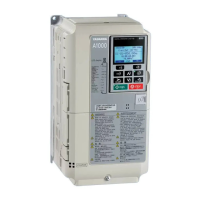
